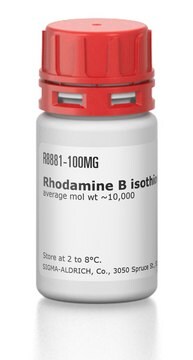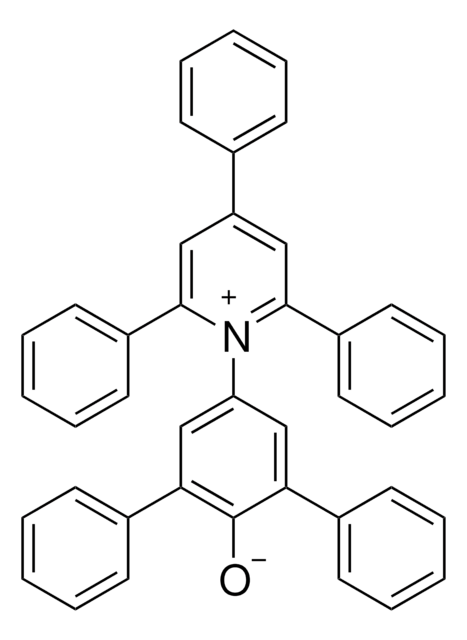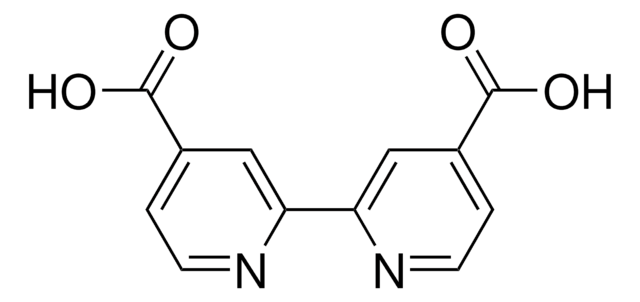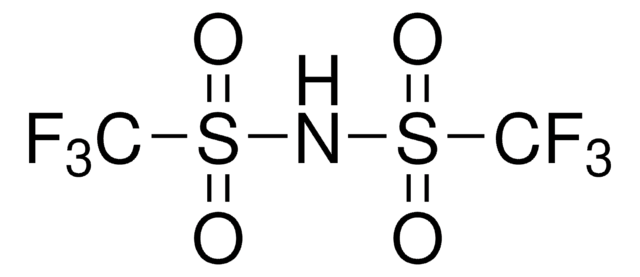おすすめの製品
アッセイ
85% (HPLC)
形状
powder (black)
mp
>300 °C
λmax
536, 357, 311 nm at 0.02 mM in DMF (lit.)
SMILES記法
OC(C1=CC(C2=CC(C(O)=O)=CC=N2)=NC=C1)=O.S=C=N[Ru]N=C=S.CCCCCCOC(C=C3)=CC=C3/C=C/C4=CC=NC(C5=NC=CC(/C=C/C6=CC=C(OCCCCCC)C=C6)=C5)=C4
InChI
1S/C38H44N2O2.C12H8N2O4.2CNS.Ru/c1-3-5-7-9-27-41-35-19-15-31(16-20-35)11-13-33-23-25-39-37(29-33)38-30-34(24-26-40-38)14-12-32-17-21-36(22-18-32)42-28-10-8-6-4-2;15-11(16)7-1-3-13-9(5-7)10-6-8(12(17)18)2-4-14-10;2*2-1-3;/h11-26,29-30H,3-10,27-28H2,1-2H3;1-6H,(H,15,16)(H,17,18);;;/q;;2*-1;+2/b13-11+,14-12+;;;;
InChI Key
HBARXZGSEMEPLK-BPSJQPAOSA-N
詳細
アプリケーション
法的情報
Greatcell Solar is a registered trademark of Greatcell Solar Materials Pty Ltd.
シグナルワード
Warning
危険有害性情報
危険有害性の分類
Eye Irrit. 2 - Skin Irrit. 2 - Skin Sens. 1 - STOT SE 3
ターゲットの組織
Respiratory system
保管分類コード
11 - Combustible Solids
WGK
WGK 3
引火点(°F)
Not applicable
引火点(℃)
Not applicable
適用法令
試験研究用途を考慮した関連法令を主に挙げております。化学物質以外については、一部の情報のみ提供しています。 製品を安全かつ合法的に使用することは、使用者の義務です。最新情報により修正される場合があります。WEBの反映には時間を要することがあるため、適宜SDSをご参照ください。
Jan Code
791415-BULK:
791415-250MG:
791415-VAR:
最新バージョンのいずれかを選択してください:
この製品を見ている人はこちらもチェック
資料
Dye-sensitized solar cells (DSCs) are 3rd generation solar cells combining the promise of high efficiency with low production costs.
While dye sensitization as the basis for color photography has been accepted for a very long time,1 attempts to use this principle for the conversion of solar light to electricity generally had resulted only in very low photocurrents, below 100 nA/cm2.2
While dye sensitization as the basis for color photography has been accepted for a very long time,1 attempts to use this principle for the conversion of solar light to electricity generally had resulted only in very low photocurrents, below 100 nA/cm2.2
ライフサイエンス、有機合成、材料科学、クロマトグラフィー、分析など、あらゆる分野の研究に経験のあるメンバーがおります。.
製品に関するお問い合わせはこちら(テクニカルサービス)













